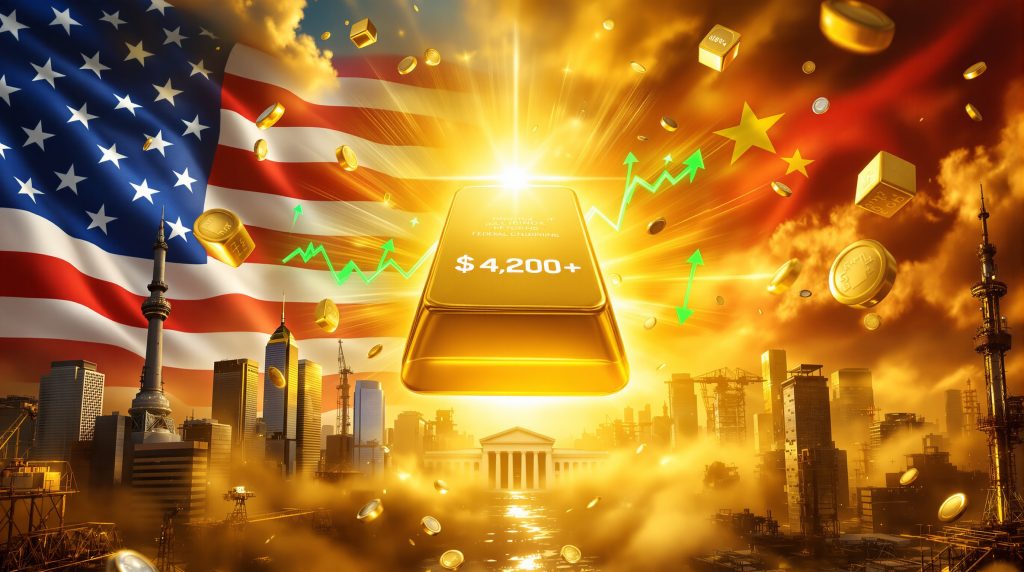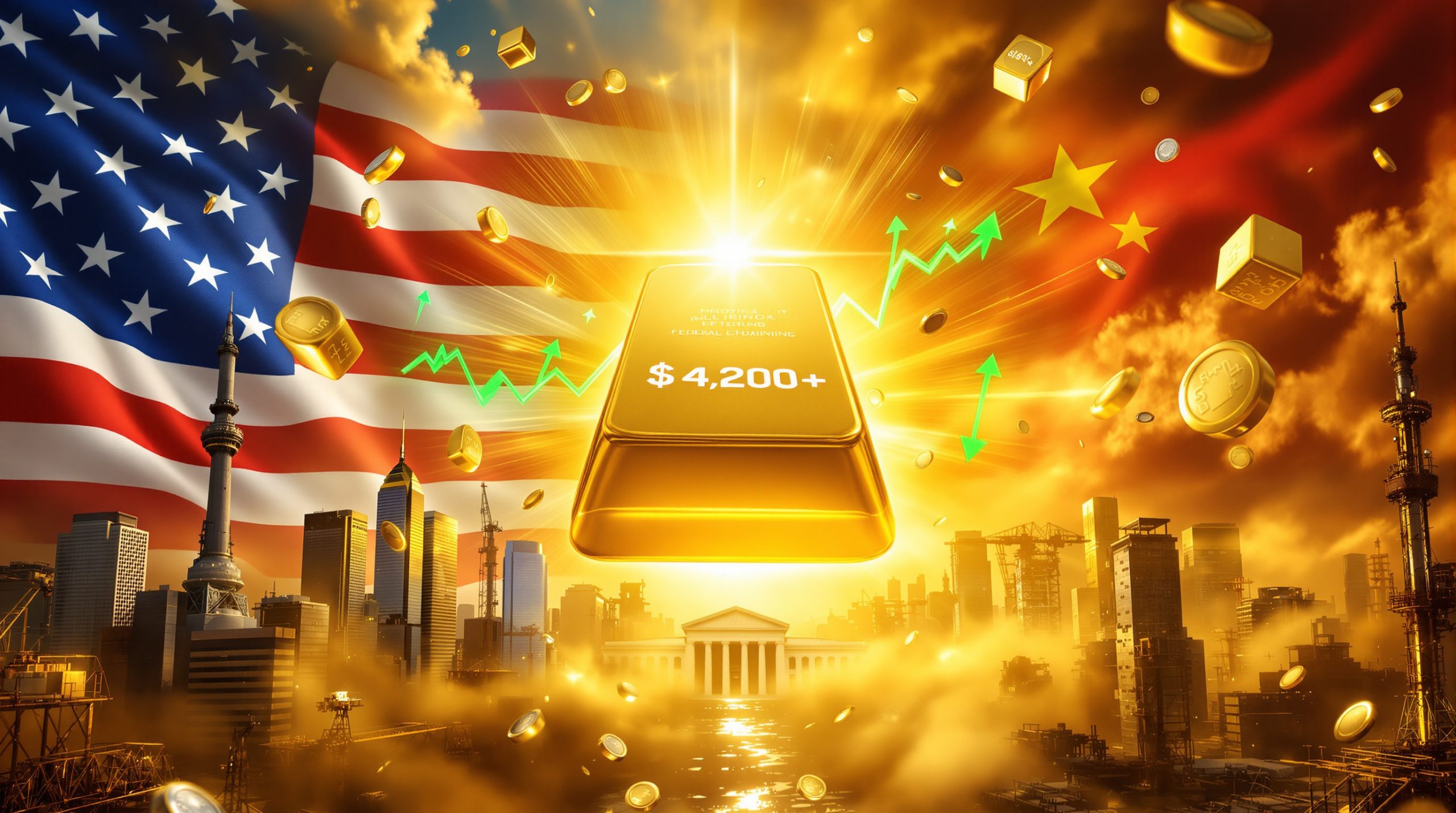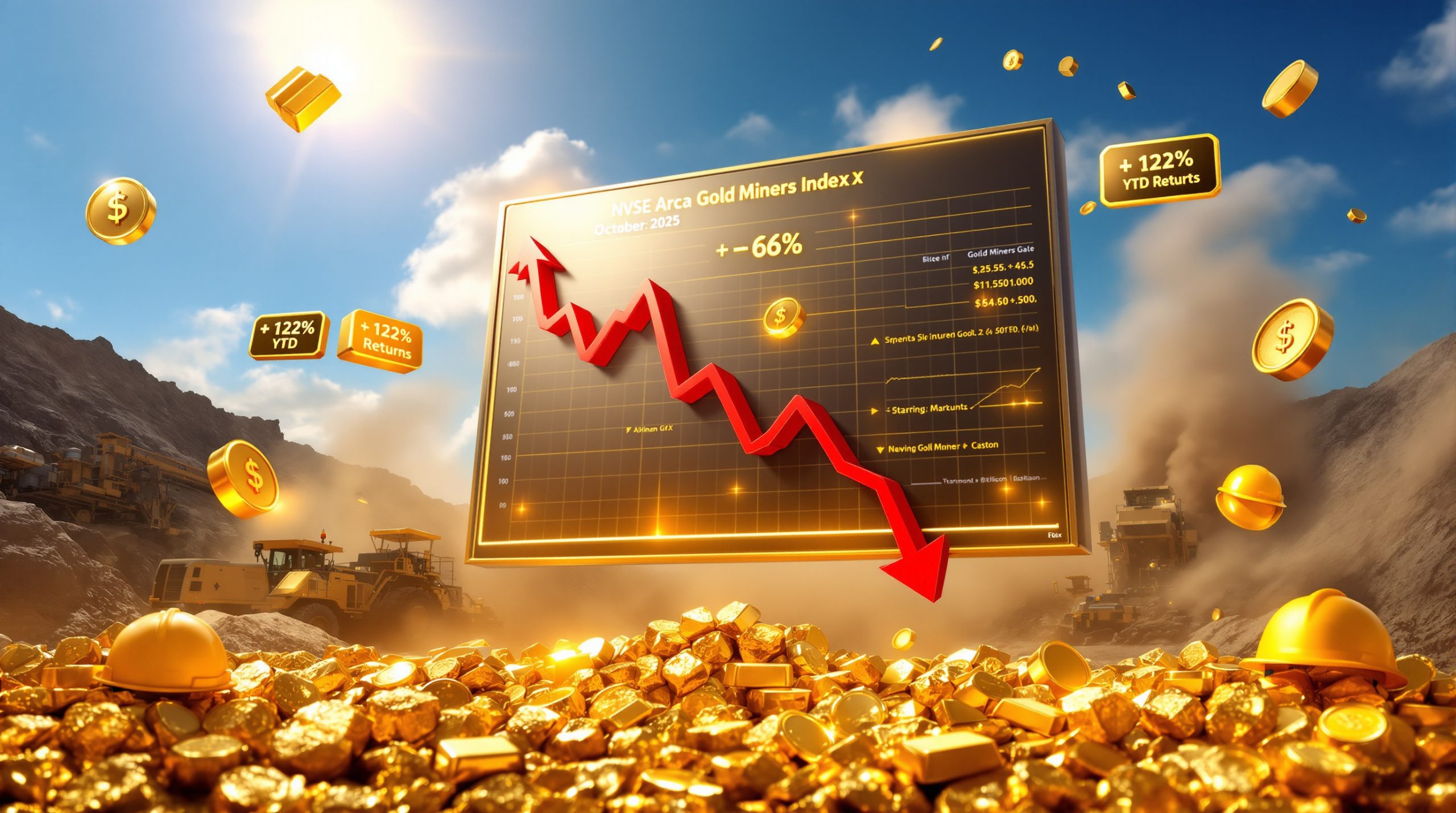Understanding the Gold-Trade War Connection
The relationship between geopolitical tensions and precious metals markets has never been more pronounced than during the current escalation of US China trade tensions and gold prices. When diplomatic relations between the world's two largest economies deteriorate, gold emerges as the ultimate store of value, transcending traditional investment categories to become a cornerstone of financial stability.
Trade conflicts fundamentally alter market dynamics by introducing uncertainty that cannot be hedged through conventional means. Unlike equities tied to specific companies or bonds dependent on government creditworthiness, gold maintains intrinsic value regardless of political outcomes or currency fluctuations. Furthermore, this characteristic becomes particularly valuable when tariff announcements and diplomatic breakdowns create cascading effects across global markets.
The Federal Reserve's monetary policy response to trade tensions amplifies gold's appeal significantly. Academic research demonstrates that gold exhibits strong negative correlation with real interest rates, with correlation coefficients of approximately -0.6 during periods of accommodative monetary policy. This mathematical relationship means that each percentage point decrease in real rates historically supports gold price appreciation of 8-12%, according to World Gold Council analysis.
Historical precedent supports gold's role during trade disputes. During the 2018-2019 US-China trade war escalation, gold prices rose approximately 18.9% from June 2018 to September 2019, even as the broader commodity complex faced headwinds. The World Gold Council's research indicates that institutional investors typically increase gold allocations by 5-15% during periods of elevated geopolitical risk, demonstrating professional recognition of precious metals' protective qualities.
Economic Uncertainty and Safe-Haven Demand Mechanics
Trade disputes create immediate market volatility that extends far beyond the specific sectors targeted by tariffs. Research from the Peterson Institute for International Economics documented that the previous trade tension cycle resulted in $80 billion in tariffs on Chinese goods by the US and $20 billion in retaliatory measures. These actions generated market uncertainty that persisted long after initial announcements.
The CBOE Volatility Index (VIX) historically rises during trade tension announcements, with average spikes of 15-25% during major tariff declarations. This volatility creates demand for assets that move independently of traditional risk factors. For instance, our gold market surge analysis demonstrates gold's performance during stress periods stems from its unique characteristics:
• Negative correlation with equity markets during extreme stress (-0.1 to -0.3 correlation coefficients)
• Independence from corporate earnings or government fiscal health
• Liquidity that remains consistent across different market conditions
• Global recognition as a store of value across cultures and political systems
Currency debasement concerns add another layer of support for gold prices during trade conflicts. Academic research indicates that countries engaged in trade disputes often pursue competitive devaluation strategies. A study in the Journal of International Economics found that tariff increases of 10% were associated with 2-3% currency depreciation among affected nations, creating demand for currency-independent assets.
Federal Reserve Policy and Gold Price Dynamics
Central bank monetary policy represents perhaps the most significant driver of gold prices during trade tensions. The opportunity cost framework explains this relationship clearly: gold generates no yield, making it less attractive when interest rates are high. Conversely, when rates fall, the relative attractiveness of non-yielding assets increases substantially.
Research from the Federal Reserve Bank of San Francisco found that a 1% decrease in real interest rates historically correlates with approximately 10-20% increases in gold prices. This mathematical relationship becomes particularly relevant during trade conflicts, as central banks often pursue accommodative policies to offset economic disruption from tariffs and supply chain disruptions.
The transmission mechanism works through multiple channels:
Direct Interest Rate Effects:
• Lower rates reduce opportunity cost of holding gold
• Real interest rates (nominal rates minus inflation) drive gold demand more than nominal rates
• Negative real rates create particularly strong gold demand
Liquidity Channel:
• Accommodative monetary policy increases money supply
• Excess liquidity flows into alternative stores of value
• Global central bank coordination amplifies these effects
Inflation Expectations:
• Trade disputes can create inflationary pressures through higher import costs
• Gold serves as hedge against purchasing power erosion
• Long-term inflation expectations influence gold demand significantly
During the 2019-2020 rate cutting cycle, the Federal Reserve dropped the fed funds rate from 2.25-2.50% to 0-0.25%. This aggressive easing coincided with significant gold price appreciation, demonstrating the practical importance of monetary policy for precious metals investors. Additionally, understanding gold as inflation hedge becomes crucial during these periods.
Why Does Monetary Policy Impact Gold So Significantly?
The relationship between monetary policy and US China trade tensions and gold prices intensifies when central banks respond to trade-induced economic stress. However, the complexity extends beyond simple interest rate movements. Academic studies show that forward guidance and quantitative easing programmes create additional demand for real assets.
Research indicates that unconventional monetary policies have amplified effects on precious metals compared to traditional rate adjustments. The European Central Bank's asset purchase programmes, for example, correlated with sustained gold demand from European investors seeking alternative stores of value.
Mining Sector Performance and Operational Leverage
Gold mining companies exhibit exceptional sensitivity to gold price movements through operational leverage effects. This mathematical relationship stems from the industry's cost structure: high fixed costs and relatively stable marginal costs create amplified profit sensitivity to price changes.
Industry analysis from Wood Mackenzie explains that a 10% increase in gold prices can translate to 20-30% increases in operating cash flow for mining companies. This leverage effect becomes particularly pronounced when gold prices rise significantly above production costs.
According to S&P Global Market Intelligence, major gold miners' average all-in sustaining costs (AISC) was approximately $1,200 per ounce in 2023. When gold prices trade substantially above these levels, mining companies generate exceptional free cash flow that supports both dividend payments and stock price appreciation.
Mining Sector Fundamentals:
| Metric | Industry Average | Leading Companies |
|---|---|---|
| All-In Sustaining Costs | $1,200/oz | $1,100-$1,400/oz |
| Reserve Life | 15-20 years | 20-25 years |
| Dividend Payout Ratios | 35-40% | Varies by company |
| Free Cash Flow Margins | Variable with gold price | Highly leveraged |
Capital allocation discipline among modern mining management teams has improved significantly since the previous commodity cycle. Bank of America Securities reported that major gold producers increased dividend payout ratios from approximately 20% in 2015 to 35-40% by 2023. This shift toward shareholder returns rather than growth-oriented capital expenditure has enhanced the investment appeal of mining equities during high gold price environments.
Newmont Corporation exemplifies this trend with proven and probable reserves of approximately 94 million ounces and mine life averaging 20+ years across operations, according to their 2023 Annual Report. Barrick Gold reported AISC of $1,306 per ounce in Q4 2023, demonstrating the cost discipline that creates operational leverage when gold prices rise.
Silver Market Dynamics and Supply Constraints
Silver markets exhibit unique characteristics that amplify precious metals trends during trade tensions. The London Bullion Market Association explains that silver lease rates represent the cost of borrowing physical metal, with rates typically ranging from 0.1% to 5% in normal market conditions. Elevated lease rates above 10% indicate severe physical tightness.
The Silver Institute reported global silver demand of 1.24 billion ounces in 2023, with industrial applications accounting for approximately 50%. This dual nature as both industrial commodity and monetary metal creates complex supply-demand dynamics during trade disputes.
Silver Supply-Demand Factors:
• Industrial demand from electronics, solar panels, and automotive applications
• Investment demand that correlates with gold but with higher volatility
• Indian market demand reaching record levels of approximately 250 million ounces annually
• Mining supply that often comes as byproduct of other metal extraction
Short squeeze dynamics in commodity markets occur when physical delivery obligations cannot be met with available supply, forcing short sellers to cover positions at progressively higher prices. Research in the Journal of Financial Markets documents this phenomenon across various commodities, with silver being particularly susceptible due to its relatively small market size compared to gold.
Historical precedent exists for dramatic silver price movements. The Hunt Brothers' silver manipulation (1979-1980) saw prices rise from $6 per ounce to over $50 per ounce before collapsing, demonstrating silver's potential for extreme volatility. More recently, in 2021, retail investor coordination briefly pushed silver futures into backwardation, showing how concentrated demand can overwhelm available supply.
Consequently, our comprehensive gold-silver ratio insights reveal how these dynamics interact during periods of heightened geopolitical tension.
Tariff Policy Impact on Precious Metals Markets
Tariff announcements create immediate behavioural changes in commodity markets through anticipatory stockpiling effects. Economic research from the National Bureau of Economic Research found that businesses increase inventories by 15-25% in the months preceding tariff implementation, creating temporary demand surges across affected sectors.
During the 2018-2019 trade tensions, the US imposed tariffs on approximately $360 billion worth of Chinese goods, with rates ranging from 10% to 25%. The Congressional Research Service documented that retaliatory tariffs affected $185 billion in US exports, creating widespread economic uncertainty that supported safe-haven demand.
Strategic mineral considerations add another dimension to trade policy impacts on metals markets. The US Geological Survey defines critical minerals as those essential to economic or national security with supply chain vulnerabilities. The 2022 list includes 50 minerals including rare earth elements, lithium, and cobalt.
Critical Mineral Dependencies:
• Chinese dominance in rare earth processing (85% of global capacity)
• Supply chain vulnerabilities in defence and technology applications
• Strategic stockpiling initiatives to reduce import dependence
• Alternative sourcing efforts driving investment in domestic production
The International Energy Agency reports that China controls approximately 60% of global rare earth element production and 85% of processing capacity. This concentration creates strategic vulnerabilities that governments address through stockpiling programmes and domestic production incentives.
Historical context comes from the US National Defence Stockpile, established in 1939 and valued at approximately $888 million by 2020. Strategic stockpiling represents government recognition that certain materials require assured access regardless of market conditions or diplomatic relations.
How Do Trade Policies Affect Market Psychology?
The psychological impact of trade policy announcements on US China trade tensions and gold prices extends beyond immediate market reactions. Reuters analysis demonstrates how trader sentiment shifts create sustained demand for safe-haven assets even after initial policy announcements.
Market psychology research indicates that uncertainty aversion increases exponentially when geopolitical tensions involve major economic powers. This behaviour pattern creates self-reinforcing cycles where initial safe-haven demand generates further buying interest from momentum-focused investors.
Portfolio Construction and Risk Management
Professional portfolio construction during periods of trade tension requires careful consideration of precious metals allocation across different vehicles. Research published in the Financial Analysts Journal suggests optimal gold allocations ranging from 2% to 10% depending on risk tolerance and economic conditions.
Modern Portfolio Theory applications to precious metals focus on correlation characteristics and volatility patterns. Academic research demonstrates that gold exhibits low correlation with traditional assets during normal periods but provides particular value during stress periods when correlation among risky assets increases.
Allocation Framework Considerations:
• Physical metals provide direct exposure without counterparty risk
• Mining equities offer operational leverage but increase equity market correlation
• ETFs and mutual funds provide liquidity but introduce management fees
• Futures contracts enable tactical positioning but require active management
Risk management applications of precious metals extend beyond simple diversification. Gold serves as portfolio insurance against multiple risk scenarios simultaneously:
- Currency debasement from excessive money printing
- Inflation acceleration from supply chain disruptions
- Geopolitical escalation affecting global trade flows
- Financial system stress creating liquidity concerns
The World Gold Council's research on institutional investors shows that pension funds and sovereign wealth funds maintain strategic precious metals allocations as permanent portfolio components rather than tactical trades. This approach recognises gold's role as long-term wealth preservation rather than short-term speculation.
Furthermore, our detailed record gold highs analysis provides insights into optimal timing strategies during volatile periods.
Supply Chain Disruption and Industrial Demand
Trade tensions create supply chain disruptions that extend far beyond the specific products targeted by tariffs. Manufacturing companies exposed to input cost volatility increasingly use precious metals positions to hedge against supply chain disruptions. This industrial demand supplements traditional investment flows during periods of trade uncertainty.
China's rare earth export restrictions highlight supply chain vulnerabilities in strategic industries. When Beijing expanded limitations on critical materials, affected industries faced immediate sourcing challenges that drove diversification efforts including alternative stores of value.
Supply Chain Risk Factors:
• Geographic concentration of critical material production
• Processing capacity limitations outside China
• Transportation bottlenecks during diplomatic tensions
• Inventory management changes due to uncertainty
Import substitution effects create temporary demand spikes as businesses rush to secure inventory before tariff implementation. This pre-positioning behaviour amplifies short-term price movements across commodity markets, with precious metals benefiting from both direct demand and safe-haven flows.
The semiconductor industry exemplifies these dynamics, requiring various precious metals in manufacturing processes while facing ongoing supply chain challenges. Trade restrictions on technology exports create additional demand for materials that can be stockpiled as value stores during uncertain periods.
Technical Analysis and Market Structure
Gold market structure during trade tensions reflects institutional accumulation patterns rather than speculative bubbles. Consistent buying pressure from central banks, pension funds, and sovereign wealth funds creates sustained demand that supports price appreciation over extended periods.
The London Bullion Market Association provides the infrastructure for global precious metals trading, with daily trading volumes exceeding $25 billion. This liquidity depth enables large institutional transactions without significant price impact under normal conditions.
Market Structure Components:
• Physical markets in London, Shanghai, and regional centres
• Futures markets providing price discovery and hedging
• ETF markets enabling retail and institutional access
• Central bank operations affecting supply and demand balance
Momentum indicators during trade tension periods show different characteristics than typical financial market trends. Precious metals trends often persist longer than equity or bond market movements because the underlying drivers (geopolitical uncertainty, monetary policy response) evolve slowly over months or years.
Technical analysis must account for the unique characteristics of precious metals markets, including seasonal patterns from jewellery demand, central bank buying cycles, and industrial usage variations. These fundamental factors create price support levels that differ from purely speculative assets.
Long-Term Outlook and Structural Changes
Current trade tensions reflect deeper competition for technological and resource supremacy that extends beyond specific policy disagreements. These underlying dynamics suggest structural changes in global trade patterns that will likely persist regardless of particular diplomatic outcomes.
Historical analysis of major geopolitical shifts shows that precious metals maintain relevance throughout different phases of international relations. Even successful trade negotiations typically involve lengthy implementation periods, maintaining uncertainty that supports continued precious metals demand.
Structural Trend Analysis:
• Deglobalisation trends creating regional supply chains
• Strategic competition extending beyond trade to technology and resources
• Monetary system evolution with central bank digital currencies
• Climate transition affecting mining and industrial demand
The energy transition creates additional demand for precious metals through renewable technology requirements while potentially affecting mining operations through environmental regulations. Solar panels, electric vehicles, and battery storage systems require various precious and critical metals.
Central bank behaviour indicates recognition of precious metals' enduring role in monetary systems. Global central bank gold purchases reached multi-decade highs in recent years, suggesting institutional acknowledgement of gold's importance regardless of short-term price movements.
What Does the Future Hold?
Looking ahead, our comprehensive gold price forecast suggests that US China trade tensions and gold prices will remain closely linked as structural competition between major powers intensifies. However, the relationship may evolve as markets adapt to persistent rather than cyclical tensions.
Academic research indicates that prolonged geopolitical competition creates different market dynamics than acute crisis periods. Investors gradually adjust portfolio allocations to reflect new baseline risk levels, potentially creating sustained rather than volatile precious metals demand.
Investment Perspective: Trade tensions between major economies create multiple reinforcing factors that support precious metals prices over extended periods. The combination of safe-haven demand, monetary policy responses, and supply chain disruptions generates sustained upward pressure that transcends short-term market volatility. Understanding these dynamics enables investors to position portfolios appropriately for different scenarios while maintaining long-term wealth preservation objectives.
Disclaimer: This analysis contains forward-looking statements and market projections based on current information. Precious metals investments carry risks including price volatility, storage costs, and potential liquidity constraints. Past performance does not guarantee future results. Investors should consult qualified financial advisors before making investment decisions and consider their individual risk tolerance and investment objectives.
Looking for Market-Leading Investment Opportunities During Trade Tensions?
Discovery Alert's proprietary Discovery IQ model delivers instant alerts on significant ASX mineral discoveries, empowering investors to capitalise on market-moving announcements as they happen. Explore historic examples of major discoveries and their exceptional returns, then begin your 30-day free trial to position yourself ahead of the market during these volatile times.




